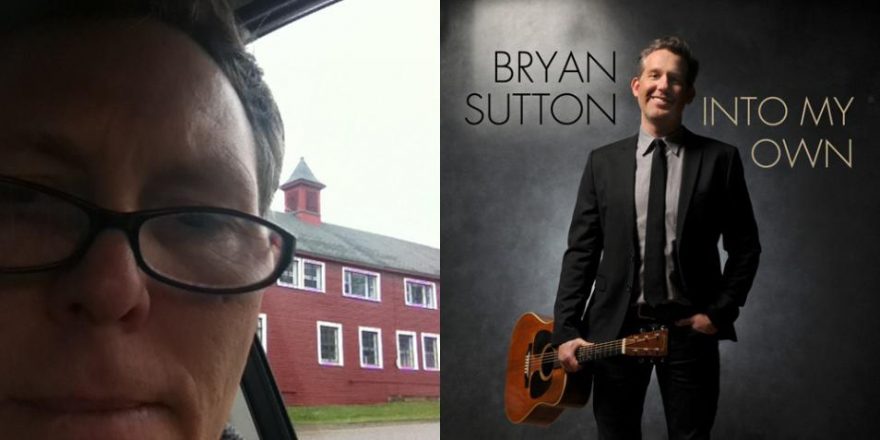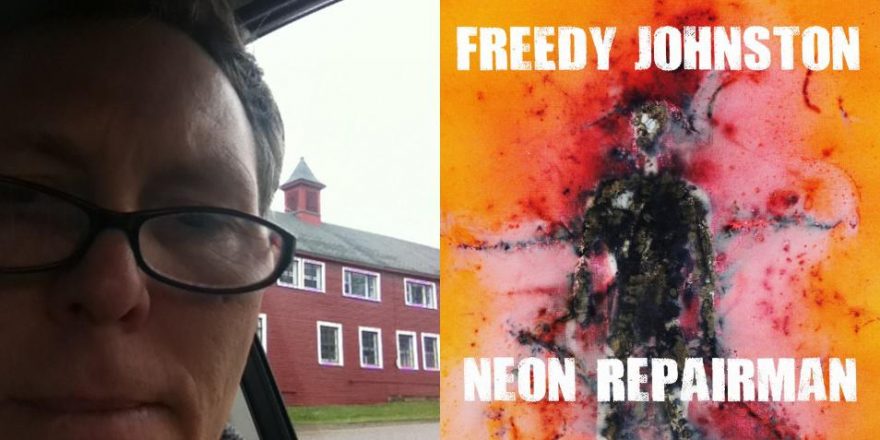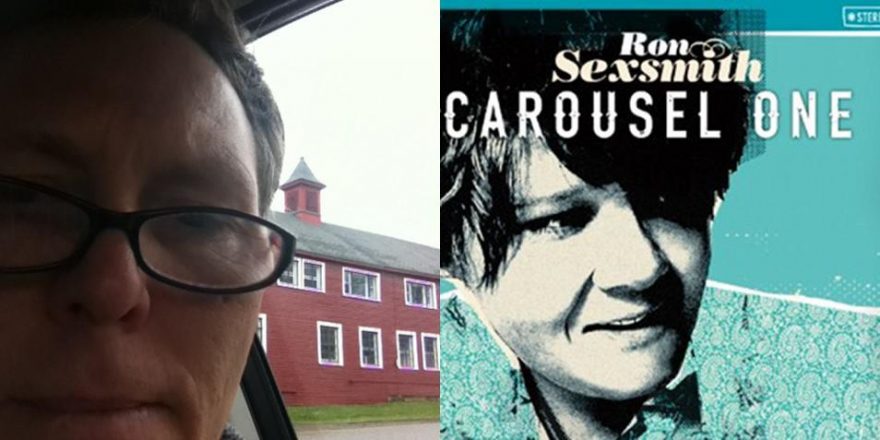How many of you kids want to hear a bedtime tale about the gaudy ‘90s, when Grandpa was a sapling? In those times, there was a beautiful princess with a sweet voice that beguiled millions, from all corners of the earth. She was showered with money and opportunity, and rewarded with love by the many-headed, those simple souls who always naively delight in euphony.
Yet her sound appalled the learned keepers of the tablets. They disdained the princess as a lightweight pretender (“A country gal from Canada in the great white-bread tradition of Anne Murray,” R. Christgau) and her siren song as catchy fluff (“Like ABBA without all the melancholy,” C. Willman), or worse (“generic and emotionless,” P. Matters). In the fullness of time, the voice dimmed, the many-headed moved on, and the learned returned to their Radiohead. But your dotty old grandfather stayed doggedly put. He felt that… Oh, is everyone already asleep?
So far, so true: I am a grandfather, and I love Shania Twain’s music. I love it despite its massive popularity, its lack of overt seriousness, its verbal infelicities, its critical disreputableness, and its moment having passed—not that I think that any of those metrics matter in the least in judging the success of an artwork. Positive contemporaneous reviews of Shania offered adjectives like “catchy,” “hooky,” and “polished.” Fair enough—but not enough. What about radically innovative, risk-taking, and industry-redefining? What about so immaculately and distinctively recorded as to boggle the ear? Critics, and many other listeners as well, zero in on lyrics, and these aren’t going to win her a Whitbread prize. Meanwhile, music that breaks sales barriers while challenging aesthetic presumptions and reimagining production protocols is rare. These records deserve attention from historians, scholars of psychoacoustics and neurophysiology, recording engineers, and—ahem—songwriters.
I come at Shania Twain from an unusual position, because I generally loathe the sort of thing she does. I mean megahit music that floods into shopping “Gallerias,” dental offices, and workout centers, and I mean music that’s nominally country but completely unconcerned with its traditions and implicit standards of craft. “You don’t like sports,” a sideman in my band once told me, “but you have to admire Michael Jordan, because that’s not just sports—that’s perfection.” Point taken. Though imperfect, Shania’s music is superior in some very meaningful respects, and incomparable in a few others. “Honey, I’m Home” is one of a few dozen songs that feel mind-blowingly great to me. (I’ll use less squishy words than “feel” as I proceed, but let’s start there.) One can also admire the plain audacity of her mid-1990s breakthrough, the creative destruction her success wrought upon the smoothly competent operators of Music Row.
I worked there at the time, as a staff writer. In 1997, when the album Come On Over became the biggest seller in the history of country music, the transmutation of values was head-spinning. Our job had hitherto been to devise stories about the lives and hearts of everyday Americans, loving and marrying and working and divorcing and struggling and coping, and to do it in an idealized version of conversational English, in which every word mattered, a sly and non-snobbish wit was especially prized, and a reflective and moral voice prevailed. Melodies and chords were secondary, and a lot of the record production was, frankly, by-the-book. If you’ve heard a single Shania song, then you know that its qualities are about opposite to the ones I just described.
To many of us who worked in the creation and selling of pre-Shania country, her rocket-like emergence was nearly as startling and out-of-the-blue as Donald Trump’s later was: You mean this is going to be the official standard now? No one could have foreseen that a Canadian woman and a South African metal producer, specializing in digitally manipulated girl power froth with light traces of country instrumentation, would upend the template completely. No one would have wanted to imagine such a thing. Country businesspeople are like any other, in their decided view that the thing that worked last month is the thing that works right now, and will keep working, world without end.
Our template was called “Garth Brooks.” In 1990 he yanked country into a febrile era of platinum sales and deep suburban infiltration. After that, no one wanted to return to the sleepy days when a huge hit record sold only a million copies. “No, let’s do the thing that sells twelve million records,” we all thought. So we—well, not me, but the best of us—wrote songs that began like this:
Just the other night at a hometown football game
My wife and I ran into my old high school flame
And as I introduced them the past came back to me
And I couldn’t help but think of the way things used to be
(“Unanswered Prayers,” by Pat Alger, Larry Bastian, and G. Brooks)
A bit of textual analysis, if you’ll permit me, will help highlight the scale of the shift from Garth’s model to Shania’s. Here is a capital-H hook, storywise. The writers intend, with a spidery deftness, to pull you into the situation. The details look precise but the story is anyone’s; surely twelve million people can identify immediately with this narrator (married, middle-aged, small-town, living mentally in the past), and feel impatient to know what happened next. The nested timeframes—the now of the narration, the recent “other night,” the grander and all-subsuming “the past”—place us in the unique zone of human consciousness, where all those times bounce around. The diction is colloquial, and the rhymes are exact. Sensing all this generous craftsmanship, a listener can relax and repose trust in the teller.
Now consider this first verse:
The car won’t start, it’s falling apart
I was late for work and the boss got smart
My panty line shows, got a run in my hose
My hair went flat—man, I hate that!
(“Honey, I’m Home,” by Robert John Lange and S. Twain)
Well, the rhymes are exact. But this is no story at all. It’s good-natured, banal griping. It’s as definitely gendered as the first lyric set but otherwise totally dissimilar. Character, narrative suspense, emotional shading—all laughed off as so much medieval etiquette. In place of song-length exposition, we get line-length declaration: I have a boring job! And a laundry list of first-world beefs! I’m shallow, and I don’t care who knows it! And you’ll notice that “the boss got smart” hits a false experiential note. It subordinates who’d “get smart”—a boss might say that of a mouthy underling but not the other way round.
Someone here is ignorant of the niceties and aspirations of country-lyric writing. Or perhaps is thumbing her nose at the old order while erecting a new one. Have a look at a more typical and even dopier lyric:
If elephants could fly, I’d be a little more optimistic
But I don’t see that happening anytime soon
I don’t mean to sound so pessimistic
But I don’t think that cow really jumped over the moon
(“When,” lyrics by Robert John Lange and S. Twain)
Do these writers know what “pessimistic” means? Not “credulous,” “childish,” or “mentally disabled,” as a literal-minded belief in nursery-rhyme imagery, expressed by a 32-year-old woman, would suggest. Do they know how ridiculous it is to rhyme optimistic with pessimistic?
In the next verse of “When,” craftsmanship hits rock bottom:
I’d love to wake up smiling, full of the joys of spring
And hear on CNN that Elvis lives again
And that John’s back with the Beatles and they’re going out on tour
I’ll be the first in line for tickets! Gotta see that show for sure!
This ungainly sack of syllables must have been thrown together in a tizzy of inspiration and never eyed critically afterward. And you can hear the effects of the slovenly writing in her vocal performance. When there’s so little prior attention paid to scansion, a singer is tasked with adding rests and cramming syllables; the least singable phrases she labors to pass off as relaxed and natural by breaking out of melody and into semi-musical speech. Luckily, she’s a strong, supple vocalist. But the best singing in the world can’t make “spring” rhyme with “again,” or turn “full of the joys of spring” into a phrase anyone born in the Anglosphere would utter. Most incredibly: John’s back with the Beatles? Did they hear that he not only left the quartet but was assassinated? Do they know that using the non-prospect of his reincarnation to juice up a larky song about impossible events is beyond bad taste?
It happens that the Statler Brothers also worked with this same conceit (I think of it as the Hell Freezing Over Conceit). Here’s what they came up with, back in 1981:
When you load up on a long shot and you win by half a nose
When the Fourth of July parade is called because it snows
When the waiting room is empty, and the doc says, “Come right in”
When Christmas comes before New Year’s, I’ll be coming home again.
(“Don’t Wait On Me,” Reid/Reid)
Overlooking that the scansion is a tad loose, there’s a ton of skill lightly embedded here. “Half a nose” is a delightful idiom. “Nose/snows” is an elegant and exact rhyme made even nicer by the spelling contrast. The four-”when” anaphora. In/again: a rhyme achieved via Southern accent, always welcome. Comes/coming: my rhetoric book says this kind of repetition with alteration is adnominatio—but a sharp tool by any name.
This is just to show how two writing duos, one careful and one less so, can start at the same point and end very far from each other. Shania’s references to Elvis and CNN are non-specific specifics that fail to dress the scene; the little scenic strokes in “Don’t Wait On Me,” by contrast, mount until every listener who has lost a bet, waited to see a doctor, and lives in America is nodding along in sympathy.
The Statlers were working in a tradition of logophilic country that was old even 38 years ago. In 1927, Jimmie Rodgers shot poor Thelma just to see her jump and fall. A generation later, Hank Williams watched the moon hide behind a cloud to hide its face and cry; and after Hank, several dozen brilliant wordsmiths (Dallas Frazier, Roger Miller, Jimmy Webb, Willie Nelson, Leon Payne, Rex Griffin, Liz Anderson, Merle Haggard, Harlan Howard, Sonny Throckmorton, Bob McDill, and Bill Anderson, to name a few giants) kept the love affair between earthy music and heavenly language burning hotly. The consistent hallmarks of all of these writers’ efforts: economical language, sharp character strokes and other piquant specifics, logical progression from beginning to end, universally relevant stories.
All of this lyrical skill and historical tradition is what Shania’s success bulldozed. We’re still feeling the effects today, in the amazingly awful lyrics of modern country. No names.
“Well, does everything have to be about nerdy writing-workshop mumbo-jumbo?” you might say. “What about dancing and fun?” And you’d be onto something. For one thing, Shania’s lyrics, when they crossed the wafer-thin line from patent ineptness to playful inanity (“I’m looking for some real estate, and I’m gonna get me some land” and “not even Dr. Ruth is gonna tell me how I feel” are two that make me laugh), reconnected country music to something that its clock-punching pros and cowboy-philosophes had lost touch with: Dumb Fun. Countless standards, from “Take An Old Cold Tater And Wait” through “Tiger By The Tail,” even up to “Achy Breaky Heart,” had proven an audience appetite for goofy, nutrition-free songwriting. Shania replenished the bowl, and with all sweets. It was frankly a relief, after the vegetative meaningfulness of the Garth years.
Pre-Shania country was lacking in another quality, too. Since the early 1980s, digital studio technologies were steadily gaining power, influencing how songs were constructed and how they sounded. By the end of the decade these technologies were reshaping audio qualities in most popular genres—for instance making snare drums, in productions both costly and cheap, sound like a video game dropped in an oil drum—and aggressively interacting with the evolution of others, like hip-hop, electronica, and metal. Effectively limitless editing capabilities were latched onto by musicians and producers who were less interested in a track that simulated a lifelike performance than one that arrested the ear with superhuman standards of time and pitch and speed, with crystalline shapes and sharp edits, with don’t-touch-that-dial pushes and inversions and manipulations. There were pockets of resistance, to be sure, yet the pro-digital, anti-naturalistic tropism acted like a tide pulling all boats on the sea of commercial music in one direction. Increasingly, sounds heard on records were sounds heard nowhere else, sounds that could only be heard on a record, because their authors weren’t musicians but audio engineers.
As the recording model gradually shifted, so too did the role and definition of “producer,” from musical and repertoire overseer and life-coach for neurotic singers to master manipulator of sound fragments. Through the shift, Nashville lagged. In a profitable and relatively novelty-resistant market where story and voice reigned and elite players often directed their own performances, the absence of cutting-edge mixers felt beside-the-point.
Enter Robert “Mutt” Lange. I’ve delayed the introduction of this Steve Bannon-esque figure for an indecently long word count. If you know anything about Mr. Lange, it is probably that he produced seminal, sharply sculpted music by AC/DC and Def Leppard back in the day, and that in middle age he plighted his troth to the Ontario-born Eilleen Regina Edwards, and eventually cheated on and divorced her. All of these are things I don’t care about. I only want to know how the Shania records that Mutt’s mind dominated came to sound as they did.
Do you remember a few paragraphs back when I said a lot of nasty and judgmental things? That part of the article is over. Here comes the feel-good. Because words matter, but music matters more. Music, or sound (I use them almost interchangeably), encompasses timefeel, tempo, percussive intensity, inter-player communication, audio clarity, equalization, balance, and a hundred other ineffable inputs that are sweet to the ear. By its sound does a recording fly or fall. That’s not to say that lyrics can’t contribute a lot—they can. But if your words have excellent meanings and don’t sound very good, you’d do just as well to sing in Esperanto. The three Shania records that Mutt produced—The Woman In Me, Come On Over, and Up!—are like behavioral science experiments, hypothesizing that a general audience will happily accept maladroit verbal information if presented in a context of enveloping, intensely pleasure-activating sound. The results confirm what the Pied Piper demonstrated in a related experiment: Sound has the edge and the power.
Here’s an interesting thing I noticed. Shania’s voice enters a song on average at the four-second mark. It’s not only notably early—three seconds ahead of Garth’s average, according to my small-sample study—it’s before the lyric. Before any story is offered, we are greeted with an off-the-cuff remark, or a cutesy little body-noise: “Let’s go, girls!” (“Man! I Feel Like A Woman”), “Mmm…yeah” (“You’re Still The One”), “Ow!” (“That Don’t Impress Me Much”), “Cool!” (“Don’t Be Stupid”), “Mm-rrlll” (“Ka-Ching!”), or “Oh, na-na-na-na-na-na-na” (“She’s Not Just A Pretty Face”). This is a valuation of feeling over meaning. It’s sexy. It indicates that someone was thinking: Hey, amid the current of sounds that creates the listener’s first impression, why not insert our star?
After those opening seconds, the current gains power and the song progresses downriver, carrying the listener effortlessly along its nitid surface. Like a theme-park water ride, it feels a little risky, although almost nothing along the trip is accidental. I’m close to saying that these productions are mere manufactures, soulless exudations of late-stage capitalism. Given that every individual peep and click is auditioned, performed and re-performed, mulled over, compressed and equalized and balanced, lifted and lowered and effected and edited, “manufacture” seems apt. Tellingly, it’s a term no one would use on Hank Williams or Thelonious Monk. What we’re after is music, not fragments stitched into a simulated performance, converted to wave forms, then mediated by a hundred audio experts, data crunchers, outboard effects, and market-fresh algorithms. That’s no outcry of the heart.
But the complicating fact is that what my ear tells my brain about a Shania song, as it’s playing, cancels out my skeptical presumptions about its method of manufacture. My brain, poor organ, is overwhelmed by beauteous swirls of pleasure. And it senses, correctly or not, a higher kind of worker than “mechanic” behind the sounds—more an auteur than a Wizard of Oz, so to speak. The listening experience, in the moment, is multihued and mesmerizing. I’m swept away by Paul Franklin’s easeful pedal steel work; thrilled by Jonathan Yudkin fiddling in triplicate (on “Don’t Be Stupid” his part evokes George Martin’s double-time, quasi-classical harpsichord on “In My Life”); impelled to jump in the air by startling pushes and whipsaw modulations. Even with all that’s constantly going on, I’m never unsure about where to direct my attention; the little detailwork is sharply focused but so, somehow, is the big picture. I don’t want to make crazy claims for the stuff, but I do feel it to be actual music, and as such it captures and fills my imagination in the same way a Doc Watson or Annette Peacock record does, though I feel a little funny saying so.
Sometimes I’ll try to listen as a music producer rather than a consumer or fan. But the records vex me, because I can’t easily reverse-engineer them, can’t altogether map what I’m hearing onto the known experience of record-making. “She’s Not Just A Pretty Face” opens with a vamp that sounds exactly like people having a good time messing around casually—kinda doubt that happened! The surprising half-bar rest between the third channel and last chorus of “Man! I Feel Like A Woman” is the kind of eccentricity that you can’t accurately gauge until baking it into the track and hearing it back; what offbeat thinking led to the move and what was the Plan B if it hadn’t worked? Convincing music rides on a stream of happy accidents, but are these glossy productions really accident-lined? The records blend human performance and insanely elaborate forethought in a particularly dense and analysis-resistant way, and I’ve spent useless and embarrassing hours trying to reconstruct the workflow.
To clarify my thinking, I decided to call George Massenburg. He knows more about commercial production and engineering techniques than any other person I know. George’s career started in the two-track era and continues on into the iPhone age, and his engineering and production resumé includes amazing, groundbreaking music by Little Feat, Linda Ronstadt, Herbie Hancock, Weather Report, James Taylor, and many more. He’s also a lab nerd whose innovations in parametric EQ and automation have reshaped the industry. And George lived a long while in Nashville, so he was very familiar with the records in question, by proxy anyway. “We listen to Shania a lot, because my wife really loves the three records,” he said, or admitted. ”And I’ve listened to a lot of Mutt Lange, back from the first AC/DC. If I had to synthesize what he did: It’s a body of work, typified by his obsession to get things in the moment, sounding great, and maybe original. Because a lot of the things on those records we hadn’t quite heard that way before. The combination of instruments, or instrumental or vocal parts, and above all, the mixing.”
George stressed the mix, and, equally, patient labor. “Mutt, it could be said, was obsessive about detail. When you listen to [his records], everything’s perfectly in place. That’s a mix. The clarity in his mixes comes from him saying, bar by bar, and note by note, ‘I can’t hear that, I want to hear that’ or, ‘That’s too loud’ or ‘That’s distracting from the vocal’ until every note is just the right level. Because that’s the technique that we grew in the 1980s and into the 1990s, until it was abandoned because nobody would pay us for it. But back then, they were willing to put the effort into making something that you could listen to a hundred times.”
I asked George how the tech of the 1990s might have specifically come into play in the three records. “You remember the 4000E [SSL] console? When it was finally tricked out, it had two equalizers in the center that you could automate. Mutt was the first person to go through vocals in a mix and EQ word-for-word. With a vocal that really has to sit just right, the classic way, and still basically the best way, is actually moving a fader, with your hand. That’s gotten more and more accessible with some of these modern control surfaces, where they really are responsive, almost to the point of being an analog feel. Moving a fader, then if a syllable is low, turn it up. Just like we used to do on analog automation. And there’s automation everywhere, but it feels organic and open—I think the production feels organic. One idea follows the next, in a lovely and easy flow.”
I had always been strongly impressed by the invariability of the Shania records across a wide range of playback systems, small and cheap to big and fancy. George agreed: “If you listen to the way Mutt balances kick and bass, it’s perfect, and works on any system. It’s hard, and I did it on some of these records that still sound good in supermarkets or earbuds. Like Earth Wind & Fire, although I was just learning how to do mixes…and still am.”
George suggested I get in touch with Jeff Balding, who had worked as an engineer under Lange on Come On Over. By email, Jeff confirmed many of George’s observations. “Mutt looks at every little detail and works to present it in a way that sounds fresh. Everything in music has basically been heard before, so the trick is figuring out how to present it in a way that sounds fresh to the listener. Each small detail adds up to make a noticeable difference in the recording. On Come On Over, we spent a lot of time on before we started recording on getting sounds. Not only making sure each instrument had its own space but making sure the tones were spectrally even within the instrument’s frequency range—especially the kick and bass. I remember using a 32-band graphic EQ on the kick, doing subtle frequency adjustments throughout its tonal range. To me this allowed it to be more compatible in playback across different speakers since there were no protruding frequencies in it.”
This was fantastic intel to get. After twenty years of puzzlement and speculation, I was receiving detailed first-hand information. It took a little of the mystery out of why these mixes sounded more buttery-smooth than most others, and it confirmed that I wasn’t imagining the phenomenon of Shania’s records sounding markedly consistent across a variety of platforms. Jeff continued, on the subject of obsessiveness: “On Come On Over we spent a lot of time making sure every sound was set evenly ‘on the front’ of the monitor. This was not just miking and EQ, but it was every detail down to how the guitar players held the pick and where they struck the string. When you combined those details with a very tight track that has the right parts and inversions, and a great feel, it created a sonic space that opened up and allowed everything to be heard.”
We’re getting to a level of nerdiness now that might lose readers who don’t work on mixes, but anyone who has or does will love what follows. “I can remember on a project I mixed with Mutt where we used the SSL automated EQ. We spent a day and a half automating the EQ on the lead vocal. Tweaking every syllable so tonally the vocal was even all the way through the mix. It’s a lot of work but when a vocal sits that even in a mix it becomes a real focal point and is almost hypnotizing to listen to. It’s almost like your ear and brain relax because listening to it is so easy to digest sonically. Of course now, with DAW’s, we can automate every plug-in on every track….”
Two questions came now to mind. One was who decided to pay for this unusual extravagance and why. I never learned the answer. The other was how one maintains a stable perspective after ducking down this rabbit-hole of insanity. For a normal brain there are investment issues: These drums sound great not because they sound great but because I just spent a thousand hours laboring on them under an attractive theory of how to make drums sound great. “Of course,” said Jeff, “how deep you go into some of this depends on the music you’re working on and your vision for it. Sometimes things can get too perfect and the music loses organic appeal. My experience with Mutt was he also recognized this side of it. Several times after working on something and hearing it in the mix, he would say, ‘I think it lost something. Let’s go back to the original.’”
After talking to the two engineers, the question of the provenance of the sound no longer seemed so existential and out-of-reach. There were the financial and human resources—I had always imagined those, of course. I had also pictured, though not with the fine-grained detail that Jeff’s account provided, the sort of drudgery involved. That last piece of information, though—he also recognized this side of it—made a nice clicking sound in my mind. Deep machine knowledge, extreme patience: rare qualities, but not super-rare. It’s the disposition allowing you to calmly throw away a mountain of work based on an instinctual reappraisal that’s rarer than hen’s teeth. Put the three together and now you’re in a chalet in Switzerland, looming over all mortal competitors.
Koan: the ideally rigorous theory must include an ongoing wariness of its own limits and potential failures.
For me, the drudgery may be the dealbreaker. I’ve fooled around now and then, simulating sounds and aping mix precepts from the three records, trying for textures as sexy and smooth as Shania’s. Needless to say, I don’t have the money that Mutt had. But I can take out a home equity loan, and I can dial up Jonathan Yudkin and Jeff Balding; and maybe I can find a woman with terrific pipes and a twenty-inch waist to sing my songs; and maybe I can will myself into the frame of mind where work is perpetually unfinished, and just discard and discard. I bet I really can do all that. It’s the drudgery I can’t do. Drudgery has always seemed to me contradictory to the proper record-making spirit.
Yet it’s something almost everyone with experience in commercial music has known intimately. Once I ran into the mandolinist Sam Bush, shortly after he’d done a session for The Woman In Me. I told him of my interest in the mechanics of Shania’s productions, and begged for some juicy details from the session. “Four hours of the same sorta beginner’s rhythm chops, over and over,” he said. “Take after take after take. Mutt kept going after these little variations, and I tried doing what he wanted.” He shook his head sadly. “But I was never quite sure what he was going after, or hearing.”
“If you didn’t get it,” I said, “then who would? There isn’t anyone alive that could have done better than you.”
“That’s true,” he said, without false humility. This suggested to me that Mutt Lange may have yet another extraordinary ability: a willingness to rob everyone of pleasure on the way to actualizing his vision of music. You hear from various sources that he’s a decent enough fellow, with a gentle and kind manner. What you never hear is that his productions are fun to work on. This is true of performers who track for him, and I suspect it’s truer yet of the engineers who slave over his mix sessions (those poor souls don’t ordinarily have much fun anyway). Lynn Peterzell was 39 years old when he slumped suddenly across the board and died, in the midst of working on mixes for The Woman In Me. The album notes have a dedication to him.
There’s more than one way to make a record, and some of them even involve having a good time. My friend, the late Jack Clement, produced artists like Charley Pride, Waylon Jennings, Jerry Lee Lewis, Doc Watson, U2, and Louis Armstrong—all people of deeper talent than Shania Twain. I wonder—sincerely—how those records will sound in 100 years, and how Come On Over will sound. Jack’s “approach” was almost no approach at all, in the older Nashville-producer tradition: get a great song together with great performers, hit the “record” button, listen hard, keep out of the way. His legendary typed-and-posted “Band Member Rules” included “be on time,” “don’t be shy with your playing,” “don’t ask for headphones,” and “remember, it only takes three minutes to make a hit record.” Those conventions would never have squared with things like 70 takes and word-by-word automated vocal mixing. (The headphone rule alone would have prevented Jack from making anything that sounded remotely like a Shania Twain record.) Under this approach, a session was an event, a performance, and the recording documented it. In method and outcome, it’s about as far from a Mutt Lange production as you can get.
Consumers love spectacle and sensation, and, since they care little about the complex interconnectedness of performance and recording, are unlikely ever to demand more records that sound as though headphones weren’t used. For this reason, and against my own interests, I predict the “spectacular mix” model will prevail over the “performance event” model in the years to come. Reaching for a tool or using a state-of-the-art method is a lot easier than proceeding as though neither tool nor method exists. Isolated performance, no-hands mixing, autotuning—all these create ease and efficiencies for engineers. All are affordable and none is inherently wicked. But it’s the mind, not the machines, that makes the difference between patterns-in-time and music. Absent a deliberate commitment to interpolate an eccentric and overbearing mind into the process, a Mutt Lange or a George Massenburg, we might expect the commercial music of the future to be rather impoverished and dull.
Because I love music that’s old, and sometimes raw, the music I’ve been writing about is challenging to me, cutting against my biases and obstructing easy analysis. Shania’s records were probably no fun to make, but they’re definitely a hell of a lot of fun to hear. Whether you like them or not, you should give them their due as engineering triumphs, admirable attainments of late 20th-century science. Each song is, like the Frankenstein monster, a convincingly living thing, compelling our interest, created in a laboratory by a singular dark genius. But let’s not lose sight of the more traditional method of creating life. Fucking: it’s simple, natural, and 100% fun.







